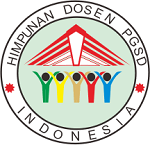MENINGKATKAN HASIL BELAJAR MATEMATIKA PADA MATERI LUAS BANGUN DATAR MELALUI MODEL PEMBELAJARAN KOOPERATIF TIM AHLI (JIGSAW) BAGI SISWA KELAS VI SD NEGERI 265 AMPUNG PADANG
DOI:
https://doi.org/10.24114/jgk.v3i2.14590Abstract
Abstract: Improving Mathematics Learning Outcomes in the Flat-Building Material through the Cooperative Learning Model Expert Team (Jigsaw) for Grade VI Students of State Elementary School 265 Ampung Padang. This study aims to determine whether the cooperative learning model of the expert team (Iigsaw) can improve mathematics learning outcomes of Grade VI students of SD Negeri 276 Ampung Padang. This type of research is a classroom action researcher using the Kemmis model that is spiral. The researcher carried out two cycles, each cycle consisting of planning, action, evaluation evaluation and reflection. Student mathematics learning outcomes about determining the area of flat build at the time of the initial test reached an average of 57.48 from 27 students, after taking action using the jigsaw cooperative learning model the average value of students increased by 5.52 from the initial test to 63 in the Cycle 1, then the second cycle the average value increased to 76.25 students complete. It can be concluded that there was a significant increase in mathematics learning outcomes using the Jigsaw cooperative learning model on the material determining the area of flat shapes in class VI SD 276 Ampung Padang.Keywords: Learning Outcomes, Learning Models, Cooperative JigsawAbstrak: Meningkatkan Hasil Belajar Matematika pada Materi Luas Bangun Datar melalui Model Pembelajaran Kooperatif Tim Ahli (Jigsaw) Bagi Siswa Kelas VI SD Negeri 265 Ampung Padang. Penelitianini bertujuan untuk rnengetahui apakah rnelalui model pembelajaran kooperatif tim ahli (Jigsaw) dapat rneningkatkan hasil belajar matematika siswa kelas VI SD Negeri 276 Ampung Padang. Jenis penelitian yang digunakan adalah peneliti tindakan kelas rnenggunakan model Kemmis yaitu berbentuk spiral. Peneliti ini dilakukan dua siklus, setiap siklus terdiri atas perencanaan, tindakan, observasi evaluasi dan refleksi. Hasil belajar matematika siswa tentang menentukan luas bangun datar pada saat tes awal mencapai rata-rata 57,48 dari 27 siswa, setelah dilakuakan tindakan dengan rnenggunakan model pembelajaran kooperatif jigsaw nilai rata-rata siswa meningkat sebesar 5,52 dari tes awal menjadi 63 pada Siklus 1, selanjutnya siklus II nilai rata-rata meningkat menjadi 76,25 siswa tuntas. Dengan demikian dapat disimpulkan terjadi peningkatan hasil belajar matematika yang signifikan dengan menggunakan model pembelajaran kooperatif Jigsaw pada materi menentukan luas bangun datar di kelas VI SD Negeri 276 Ampung Padang.Kata Kunci : Hasil Belajar, Model Pembelajaran, Kooperatif JigsawDownloads
Published
2019-09-17
How to Cite
Hasibuan, M. (2019). MENINGKATKAN HASIL BELAJAR MATEMATIKA PADA MATERI LUAS BANGUN DATAR MELALUI MODEL PEMBELAJARAN KOOPERATIF TIM AHLI (JIGSAW) BAGI SISWA KELAS VI SD NEGERI 265 AMPUNG PADANG. JGK (Jurnal Guru Kita), 3(2), 212–218. https://doi.org/10.24114/jgk.v3i2.14590
Issue
Section
Articles
License
Authors published with the JGK (Jurnal Guru Kita) agree to the following terms:
- Authors retain copyright and grant the journal the right of first publication with the work simultaneously licensed under a Creative Commons Attribution License (CC BY-SA 4.0) that allows others to share the work with an acknowledgment of the work's authorship and initial publication in this journal.
- Authors are able to enter into separate, additional contractual arrangements for the non-exclusive distribution of the journal's published version of the work (e.g., post it to an institutional repository or publish it in a book), with an acknowledgment of its initial publication in this journal.
- Authors are permitted and encouraged to post their work online (e.g., in institutional repositories or on their website) prior to and during the submission process, as it can lead to productive exchanges, as well as earlier and greater citation of published work. (See The Effect of Open Access)




























